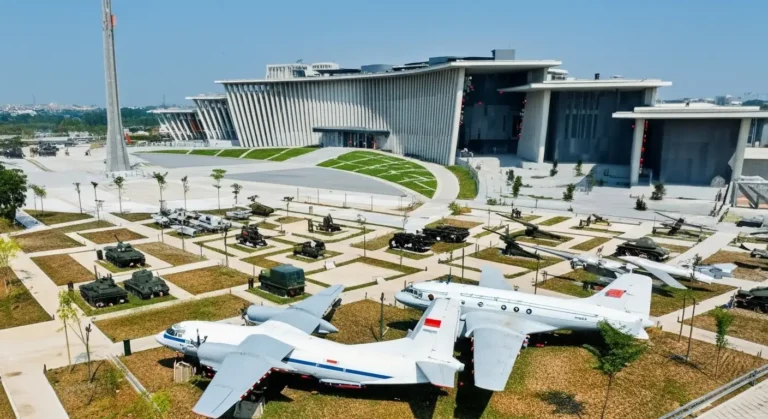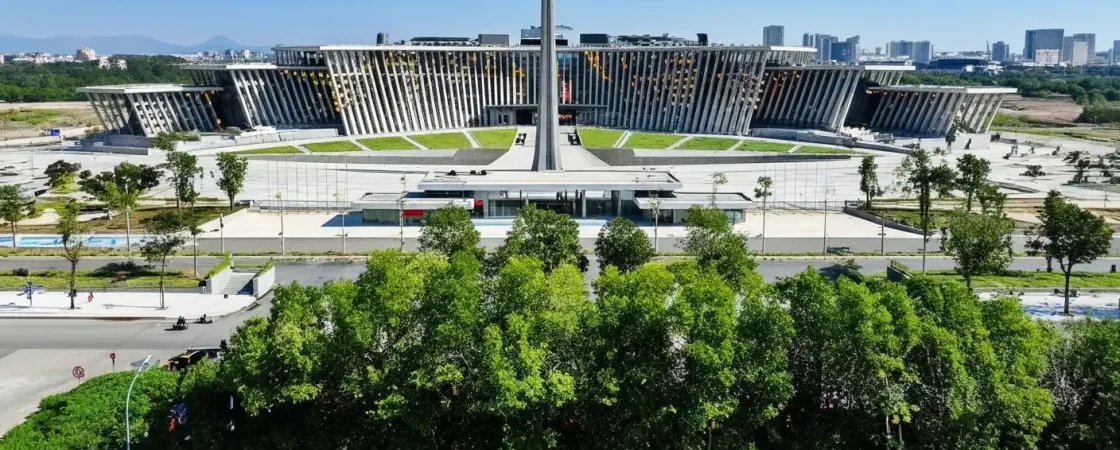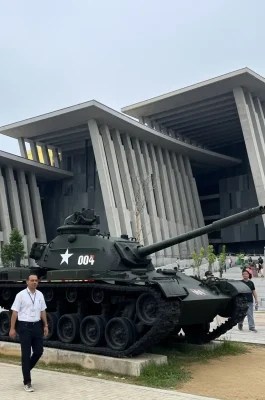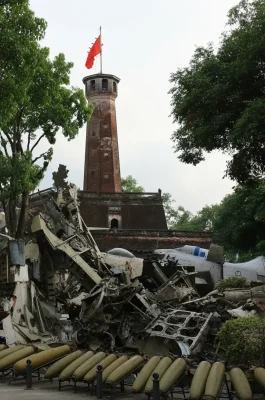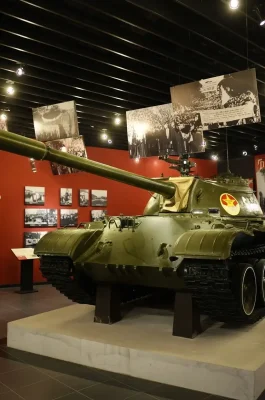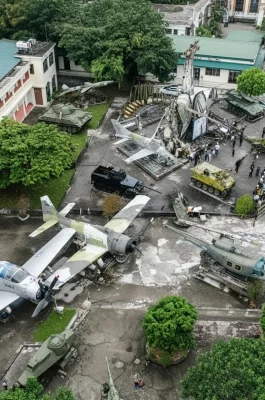The Vietnam Military History Museum is one of Hanoi’s most direct and impactful historical sites. It provides a Vietnamese perspective on the country’s 30-year struggle for independence, primarily covering the wars against the French and the Americans. The museum is a crucial visit for anyone wanting to understand the nation’s military resilience.
I. Museum Overview and Key Features
Location Significance: The museum is centrally located in the Ba Đình district, close to the Ho Chi Minh Mausoleum and the Thăng Long Imperial Citadel, making it easy to include in a historical walking tour.
Flag Tower of Hanoi (Cột cờ Hà Nội): The museum complex includes the historic 33 meter tall Flag Tower, a symbol of Hanoi and one of the few historical structures spared by the French occupation. Visitors can climb to the top for a view of the surrounding area.
Dual Exhibition Space: The museum is divided into two major areas:
- Indoor Galleries: Focus on the history of the Vietnamese People’s Army, displaying uniforms, personal artifacts of famous generals, propaganda posters, and detailed exhibits on various campaigns, including the crucial Battle of Điện Biên Phủ.
- Outdoor Exhibition: A large courtyard displaying captured French and U.S. military hardware, including aircraft wreckage, tanks, artillery, and helicopters. This area is known for its towering pyramid of crashed aircraft and military remnants.
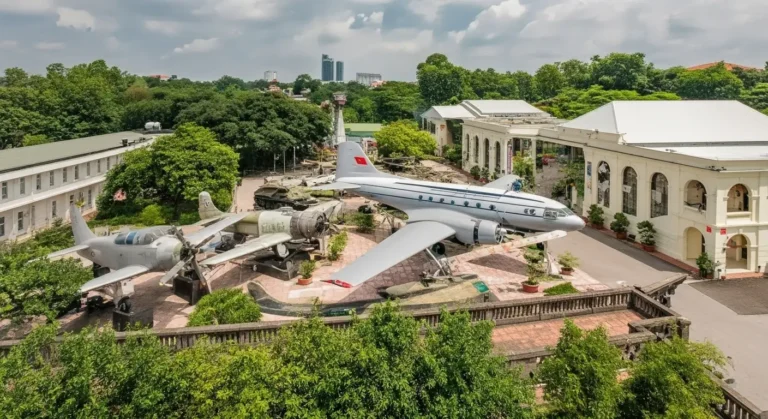
II. Historical and Cultural Focus
The museum organizes its vast collection around six historical periods, emphasizing the ingenuity and resilience of the Vietnamese people:
Ancient History: Early struggles for independence before 1945.
The Anti-French Resistance War (1945−1954): Focused heavily on the Điện Biên Phủ victory.
The Anti-American Resistance War (1954−1975): Known abroad as the Vietnam War, featuring exhibits on the Ho Chi Minh Trail and the Tet Offensive.
Military-Civilian Unity: Highlighting the crucial support roles played by civilians and women during the conflicts.
Weaponry and Equipment: Displays show both modern captured weapons and ingenious self-made or rudimentary weapons used by Vietnamese forces.
III. Practical Visitor Information
| Detail | Information |
|---|---|
| Address | 28A Điện Biên Phủ Street, Ba Đình District, Hà Nội, Vietnam. |
| Getting There | Easily accessible by walking from the Ho Chi Minh Complex or by a short taxi ride from the Old Quarter. |
| Opening Hours | 8:00 AM – 11:30 AM and 1:00 PM – 4:30 PM (Daily). |
| Closed: Mondays and Fridays. | |
| Admission Fee | Adults: 40,000 VND per person (approx. $1.6 USD) |
| Photography Fee: An additional fee (usually around 20,000 VND) may apply for cameras. | |
| Phone Number | +84 24 3823 4264 |
IV. Traveler's Tips
Best Time to Visit: Visit the museum in the morning to enjoy the outdoor exhibit when it’s cooler. The morning session also generally offers better light for photography of the external hardware.
Combined Itinerary: Since the museum is closed on Mondays and Fridays, plan your visit for a Tuesday to Thursday morning. You can easily walk to the Ho Chi Minh Museum or the Imperial Citadel of Thăng Long afterward.
Reading Material: While captions are in English, the history is dense. Consider doing a brief reading on the Indochina Wars and the Vietnam War beforehand to enhance your understanding.
